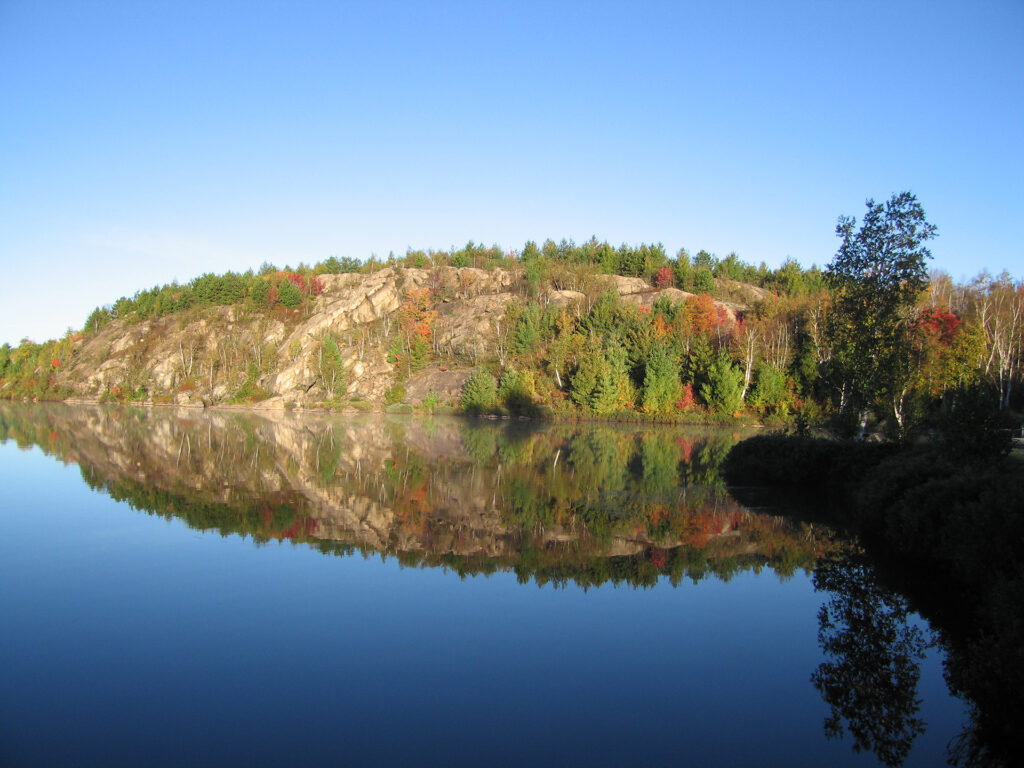Scientifically Based Plans
The Sudbury Source Protection Plan identifies potential threats (as defined in the Clean Water Act and described in the Assessment Report) to municipal sources of drinking water and prescribes policies, actions and programs to reduce or eliminate these threats. The Source Protection Plan was originally approved on September 19, 2014 and became effective April 1, 2015. Updates under Section 36 of the Clean Water Act, 2006 were completed with an effective date of March 16, 2021.
The Explanatory Document provides the intent and rationale behind the policy decisions made in the Source Protection Plan.

Assessment Report
The Assessment Report contains technical information about surface and groundwater to inform the Source Protection Plan, including:
- Watershed Characterization
- Groundwater Vulnerability
- Surface Water Vulnerability
- Water Quantity Analysis
- Water Quality Threats and Issues
Approved Assessment Report Sections
The Assessment Report was approved on September 2014. Amendments were made on March, 16 2021 under Section 36 of the Clean Water Act, 2006. This notice provides a summary of the changes that were made.
Introduction
Part 1 – Report Overview and Methodology
Part 2 – The Greater Sudbury Source Protection Area
Part 3 – David Street Drinking Water System
Part 4 – Wanapitei River Drinking Water System
Part 5 – Vermilion River Drinking Water System
Part 6 – Valley Drinking Water System
Part 7 – Garson Drinking Water System
Part 8 – Falconbridge Drinking Water System
Part 9 – Onaping Drinking Water System
Part 10 – Dowling Drinking Water System
Part 11 – Appendices
View entire report
2.1_Watershed Boundaries
2.2_Physical Geography
2.3_Woodlands Riparian Areas
2.4_Watershed Wetlands
2.5_Population Density
2.6_Bedrock Geology
2.7_Surficial Geology
2.8_Watershed Hydrology
2.9_Intrinsic Groundwater Vulnerability
2.10_Highly Vulnerable Aquifer with Vulnerability Scores
2.11_Highly Vulnerable Aquifer with Managed Lands
2.12_Highly Vulnerable Aquifer with Impervious Surfaces
2.13_Highly Vulnerable Aquifer Livestock Density
2.14 – Significant Groundwater Recharge Areas
2.15_Significant Groundwater Recharge Areas Managed Lands
2.16_Significant Groundwater Recharge Areas Impervious Surfaces
2.17_Significant Groundwater Recharge Areas Livestock Density
2.18_Surface Water Systems – Stress Level Tier1
2.19_Groundwater Systems – Stress Level Tier 1
2.20_Surface Water Systems -Stress Level Tier 2
2.21_Groundwater Systems – Stress Level Tier 2
2.22_Aquatic Ecology
3.1_Ramsey Lake Contributing Water
3.2_Ramsey Lake Subwatersheds
3.3_Ramsey Lake Significant Groundwater Recharge Areas
3.4_Ramsey Lake Local Area – Tier 3
3.5_Ramsey Lake Intake Protection Zone 1
3.6_Ramsey Lake Intake Protection Zones 1 & 2
3.7_Ramsey Lake Intake Protection Zones 1, 2 & 3
3.8_Ramsey Lake Managed Lands
3.9_Ramsey Lake Impervious Surfaces
3.10_Ramsey Lake Livestock Density
3.11_Ramsey Lake Issues Contributing Area
5.1_Vermilion River Drinking Water System
5.2_Vermilion River Subwatersheds
5.3_Vermilion River Intake Protection Zone 1
5.4_Vermilion River Intake Protection Zones 1 & 2
5.5_Vermilion River Intake Protection Zones 1, 2 & 3
5.6_Vermilion River Managed Lands
5.7_Vermilion River Impervious Surfaces
5.8_Vermilion River Livestock Density
6.1_Valley Drinking Water Systems
6.2_Valley East Contributing Area
6.3_Capreol Contributing Area
6.4_Valley East Significant Groundwater Recharge Areas – Tier 2
6.5_Valley Drinking Water System Local Area – Tier 3
6.6_Valley East Significant Groundwater Recharge Areas- Tier 3
6.7_Valley East Wellhead Protection Areas
6.8_Deschene Wellhead Protection Area
6.9_Frost Wellhead Protection Area
6.10_Kenneth Wellhead Protection Area
6.11_Linden, Notre, Dame, Q & R Wellhead Protection Areas
6.12_Michelle Wellhead Protection Area
6.13_Pharand Wellhead Protection Area
6.14_Philippe Wellhead Protection Area 6.15_I, J, M Wellhead Protection Areas
6.16_Valley Wellhead Protection Areas Scoring 6.17_Deschene Wellhead Protection Area Scoring
6.18_Frost Wellhead Protection Area Scoring
6.19_Kenneth Wellhead Protection Area Scoring
6.20_Linden, Notre Dame, Q & R Scoring
6.21_Michelle Wellhead Protection Area Scoring
6.22_Pharand Wellhead Protection Area Scoring
6.23_Philippe Wellhead Protection Area Scoring
6.24_I, J, M Wellhead Protection Areas Scoring
6.25_Valley East Managed Lands
6.26_Valley East Impervious Surfaces 6.27_Valley East Livestock Density
7.1_Garson Drinking Water System
7.2_Garson Contributing Area
7.3_Garson Wellhead Protection Areas
7.4 _Garson 1 & 3 Wellhead Protection Areas
7.5_Garson 2 Wellhead Protection Area
7.6_Garson Wellhead Protection Areas Scoring
7.7_Garson 1 & 3 Scoring
7.8_Garson 2 Scoring
7.9_Garson Managed Lands
7.10_Garson Impervious Surfaces
7.11_Garson Livestock Density
Tier 3 Reports
- Valley Drinking Water System Tier 3 Water Budget and Water Quantity Risk Assessment (Report)
Many other technical reports supported the development of the Assessment Report and Source Protection Plan. The list of reports can be found in the Assessment Report Appendices, all reports are available upon request.
Source Protection Plan - Annual Progress Report
Annually the Sudbury Source Protection Authority is required under the Clean Water Act, 2006 to report to the Ministry of the Environment, Conservation and Parks on the progress made throughout the previous calendar year in implementing the Source Protection Plan.


